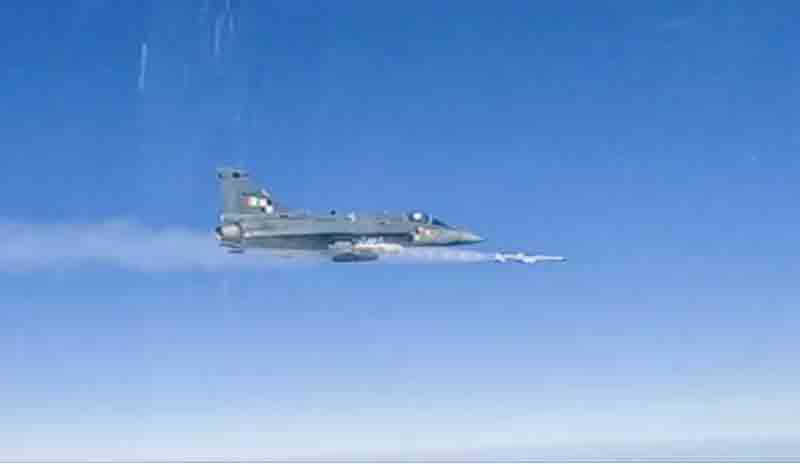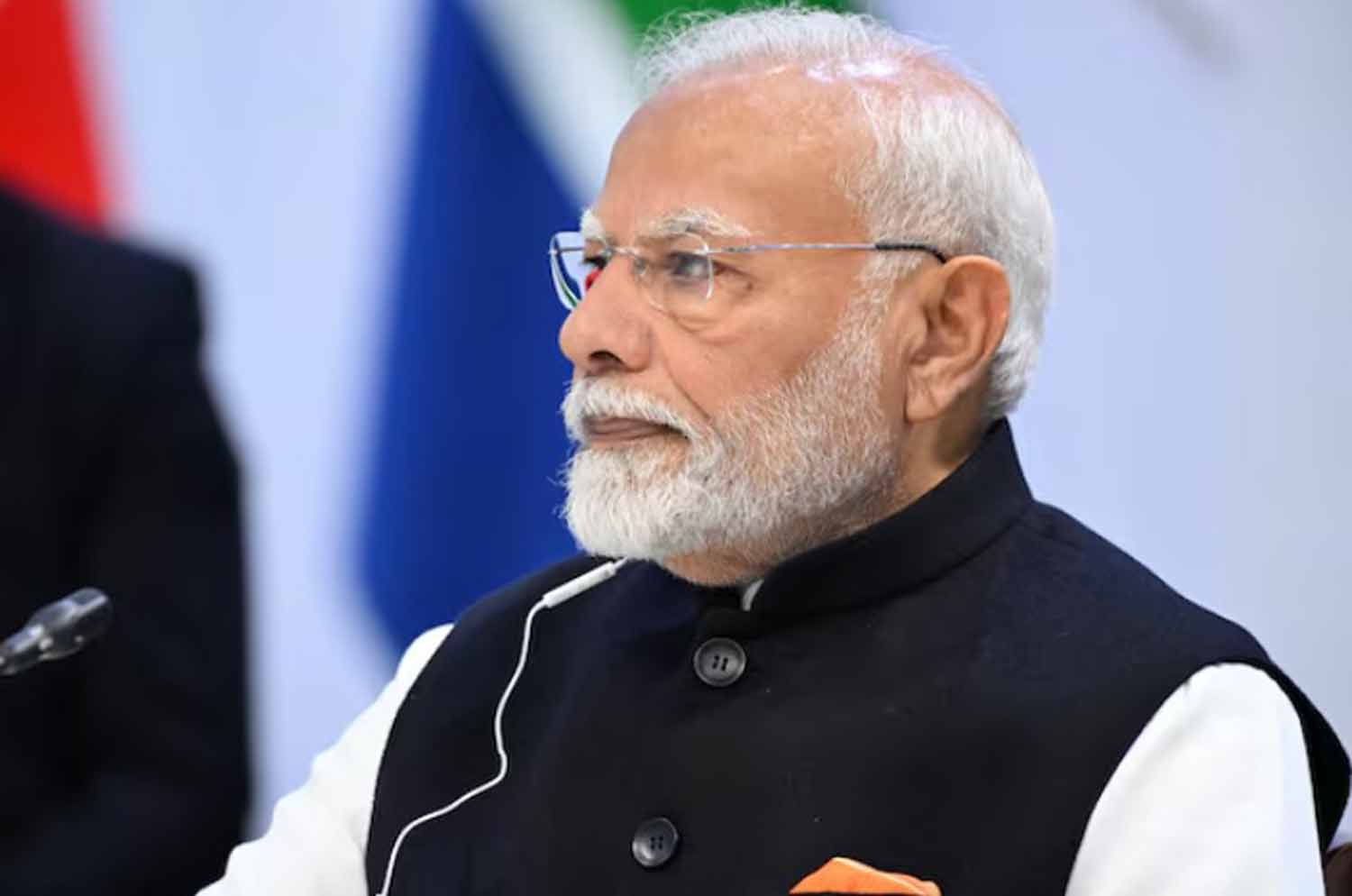In a notable advancement towards achieving self-sufficiency in cutting-edge defense technology, India has successfully executed a test launch of its homegrown ASTRA Beyond Visual Range Air-to-Air Missile (BVRAAM) from the Tejas LCA AF MK1 light combat aircraft. This indigenous missile, engineered to target aerial threats at long ranges, is positioned as a superior option compared to Russia’s R-77 (RVV-AE), which is currently the primary air-to-air missile for India’s Sukhoi Su-30MKI fleet.
Conducted on March 12, 2025, at a test range off the coast of Chandipur, Odisha, this latest test signifies a pivotal achievement in the operational integration of the ASTRA BVRAAM into India’s frontline fighter aircraft.
The successful launch represents a significant leap in India’s indigenous missile capabilities, reinforcing the nation’s role as a prominent player in the global defense and aerospace industry. The Indian Ministry of Defence (MoD) stated, “This successful trial marks an important milestone in enhancing the missile’s integration with the Tejas LCA AF MK1A variant. Further tests are scheduled to assess its performance comprehensively.”
During the live-fire exercise, the missile effectively intercepted and destroyed an aerial target, showcasing remarkable accuracy, reliability, and readiness for mission deployment. All subsystems operated without issues, adhering to rigorous operational standards and confirming the missile’s readiness for full-scale combat deployment.
Developed by the Defence Research and Development Organisation (DRDO), the ASTRA BVRAAM represents a significant advancement in India’s air superiority strategy, equipping the Tejas MK1 and its upgraded MK1A variant with beyond visual range (BVR) strike capabilities that surpass 100 km.
The ASTRA initiative is a crucial element of India’s comprehensive effort to achieve self-reliance in defense manufacturing, in line with the government’s ‘Make in India’ campaign aimed at decreasing dependence on foreign weaponry.
Additionally, the missile is being integrated into India’s Su-30MKI fighter jets, which are essential to the Indian Air Force (IAF), as well as the MiG-29K fleet of the Indian Navy, ensuring that India’s indigenous air combat capabilities remain at the forefront of technology.
The strategic importance of the ASTRA program goes beyond national defense, as India aims to establish itself as a global provider of high-performance air-to-air missile systems.
The ASTRA BVRAAM is designed with advanced guidance and navigation technologies, significantly boosting its effectiveness in complex aerial combat scenarios.
Measuring 3.8 meters in length and weighing 154 kg at launch, it is propelled by a solid-fuel rocket motor for rapid interception.
The missile is equipped with a 15 kg high-explosive warhead, triggered by a proximity fuse, and employs inertial navigation, mid-course updates, and terminal active radar homing to achieve precise targeting against fast-moving aerial threats.
The missile is equipped with sophisticated onboard radar seekers and electronic counter-countermeasures (ECCM) systems, enabling it to overcome enemy jamming and deception tactics, thereby enhancing its combat effectiveness.
The ASTRA BVRAAM is developing into a multi-tier missile family, with each version aimed at broadening India’s operational capabilities and combat flexibility:
ASTRA Mk-1 – Currently operational, boasting a range of over 110 km.
ASTRA Mk-2 – In the testing phase, featuring an increased range of 160 km.
ASTRA Mk-3 – In development, aiming for an impressive range of 350 km, positioning it among the leading long-range air-to-air missiles globally.
With the Mk-3 variant, India seeks to close the capability gap with Western and Chinese beyond-visual-range (BVR) missile systems, such as the MBDA Meteor and the PL-15.
The Tejas LCA AF MK1A, now in mass production, marks a significant enhancement over its predecessor, incorporating cutting-edge avionics and combat systems, including:
The Tejas LCA AF MK1A features the Elta Systems EL/M-2052 AESA radar, an electronic warfare (EW) suite for improved survivability, and an air-to-air refueling probe to extend its combat range and mission duration.
Hindustan Aeronautics Limited (HAL) is actively manufacturing 83 units of the Tejas MK1A, which will augment the Indian Air Force’s existing Tejas MK1 squadrons, ensuring that India maintains a credible, domestically produced fighter fleet capable of addressing contemporary aerial threats.
India is actively promoting the ASTRA BVRAAM to international markets, particularly targeting operators of the Su-30 fighter aircraft. With successful integration and testing on the Su-30MKI, the ASTRA missile offers an attractive option for countries in search of an advanced and cost-effective beyond-visual-range missile solution.
Potential buyers include nations in Southeast Asia and other regions, specifically:
– Malaysia
– Indonesia
– Vietnam
– Myanmar
These countries operate various Sukhoi Su-30 models, making them prime candidates for India’s export strategy with the ASTRA missile. Additionally, India is reaching out to air forces in the Middle East and Africa, which are looking to modernize their air-to-air weaponry for both legacy and next-generation fighter aircraft.
As India strengthens its presence in the global defense sector, the ASTRA BVRAAM program represents New Delhi’s rise as a credible exporter of high-tech weaponry. By providing a cost-effective and high-performance alternative to Western and Russian missile systems, India is strategically aligning itself with leading nations in air-to-air combat technology.
With ongoing investments in domestic research, development, and production, India is set to transform the global air warfare landscape, establishing new standards in missile innovation, operational effectiveness, and export potential. The successful testing of the ASTRA BVRAAM signifies more than just a technical milestone; it marks the beginning of a new era of dominance in India’s air combat capabilities.
Discover more from Defence Talks | Defense News Hub, Military Updates, Security Insights
Subscribe to get the latest posts sent to your email.





